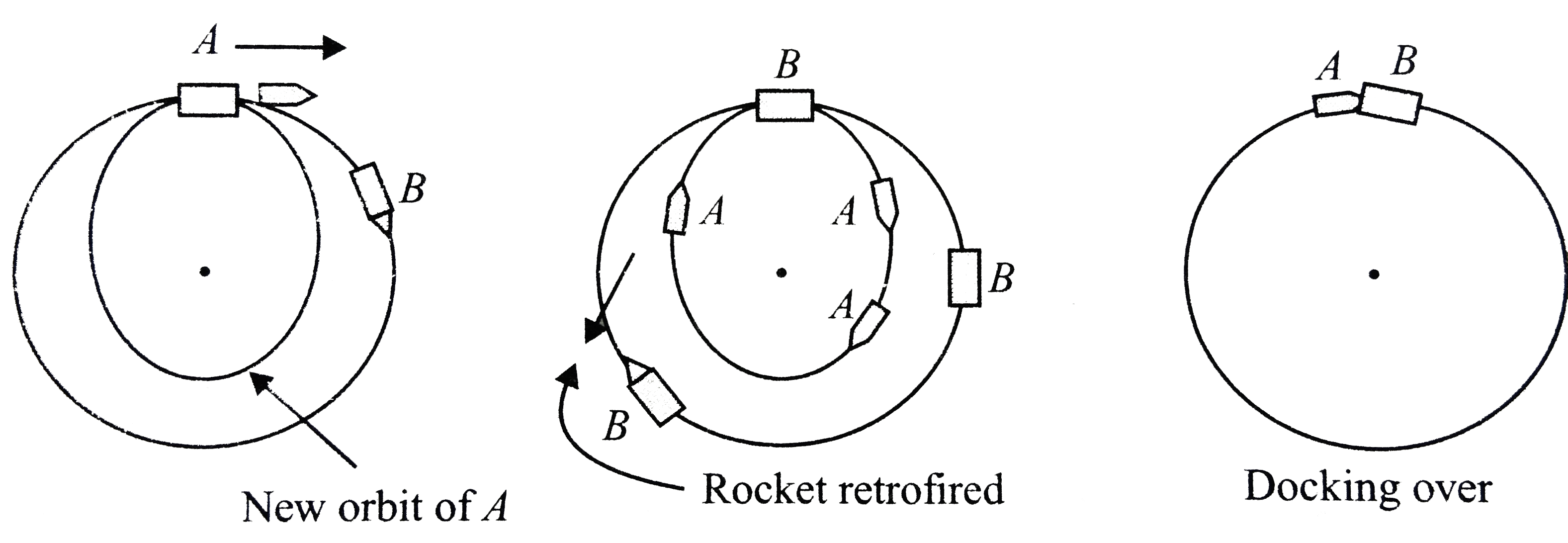Two car garages have a common gate which needs to open automatically when a car enters either of the garages or cars enter both. Devise a circuit that resembles this situation using diodes for the situation .
To devise a circuit that opens a common gate automatically when a car enters either of the two garages (or both), we can use diodes to create an OR gate configuration. Here’s a step-by-step solution to construct this circuit:
Step 1: Identify the Components
We need the following components:
- 2 Diodes (D1 and D2)
- 1 Resistor (R)
- 1 Battery (V)
- Connection points for the two garages (A and B)
- Common gate output point (C)
Step 2: Set Up the Circuit
1. Connect the Diodes:
- Connect the anode of the first diode (D1) to point A (Garage A).
- Connect the anode of the second diode (D2) to point B (Garage B).
- Connect the cathodes of both diodes together at point C (the output that controls the gate).
2. Connect the Resistor:
- Connect a resistor (R) from point C to the ground (earth). This will help in limiting the current and ensuring that the circuit operates safely.
3. Connect the Battery:
- Connect the positive terminal of the battery (V) to point A through a switch (to simulate the entry of a car).
- Connect the positive terminal of the battery to point B through another switch (to simulate the entry of a car).
Step 3: Analyze the Circuit
- The circuit behaves like an OR gate. This means:
- If a car enters Garage A (point A), current flows through D1, and point C gets activated (output is high).
- If a car enters Garage B (point B), current flows through D2, and point C gets activated (output is high).
- If both garages have cars, both diodes conduct, and point C is also activated (output is high).
- If no car is present in either garage, both diodes are off, and point C remains low (output is low).
Step 4: Truth Table
- Inputs: A (Garage A), B (Garage B)
- Output: C (Gate)
| A (Garage A) | B (Garage B) | C (Gate) |
|--------------|---------------|----------|
| 0 | 0 | 0 |
| 0 | 1 | 1 |
| 1 | 0 | 1 |
| 1 | 1 | 1 |
Conclusion
This circuit effectively opens the common gate whenever a car enters either garage or both, using diodes to create an OR gate configuration.
We need the following components:
- 2 Diodes (D1 and D2)
- 1 Resistor (R)
- 1 Battery (V)
- Connection points for the two garages (A and B)
- Common gate output point (C)
1. Connect the Diodes:
- Connect the anode of the first diode (D1) to point A (Garage A).
- Connect the anode of the second diode (D2) to point B (Garage B).
- Connect the cathodes of both diodes together at point C (the output that controls the gate).
- Connect a resistor (R) from point C to the ground (earth). This will help in limiting the current and ensuring that the circuit operates safely.
- Connect the positive terminal of the battery (V) to point A through a switch (to simulate the entry of a car).
- Connect the positive terminal of the battery to point B through another switch (to simulate the entry of a car).
- The circuit behaves like an OR gate. This means:
- If a car enters Garage A (point A), current flows through D1, and point C gets activated (output is high).
- If a car enters Garage B (point B), current flows through D2, and point C gets activated (output is high).
- If both garages have cars, both diodes conduct, and point C is also activated (output is high).
- If no car is present in either garage, both diodes are off, and point C remains low (output is low).
- Inputs: A (Garage A), B (Garage B)
- Output: C (Gate)
| A (Garage A) | B (Garage B) | C (Gate) |
|--------------|---------------|----------|
| 0 | 0 | 0 |
| 0 | 1 | 1 |
| 1 | 0 | 1 |
| 1 | 1 | 1 |
This circuit effectively opens the common gate whenever a car enters either garage or both, using diodes to create an OR gate configuration.
Topper's Solved these Questions
- NUCLEIBOOK - NCERT EXEMPLAR ENGLISHCHAPTER - NUCLEIEXERCISE - Long answer type question
10 Videos
- NUCLEIBOOK - NCERT EXEMPLAR ENGLISHCHAPTER - NUCLEIEXERCISE - Long answer type question
10 Videos
- MOVING CHARNGES AND MAGNETISMBOOK - NCERT EXEMPLAR ENGLISHCHAPTER - MOVING CHARNGES AND MAGNETISMEXERCISE - Long Answer Type Questions
7 Videos
- RAY OPTICS AND OPTICAL INSTRUMENTS BOOK - NCERT EXEMPLAR ENGLISHCHAPTER - RAY OPTICS AND OPTICAL INSTRUMENTS EXERCISE - VERY SHORT ANSWER TYPE QUESTIONS
16 Videos
Similar Questions
Two racing cars 'A' and 'B' having masses 'M' and '2m' respectively start running from the starting line on a horizontal plane.Both cars 'A' and B' have same speed 'V' which is constant through out the journey. The track of the two cars are the arcs of concentric circle having centres O1 and O2 as shwon in figure with data. The friction coefficient of the two cars with the road is same. There is a finishing line at the end of the arc. Using these informations solve the following questions.

The magnitude of relative acceleration of two cars when car 'A' just reaches the end of circular arc of radius Y.
View SolutionTwo racing cars 'A' and 'B' having masses 'M' and '2m' respectively start running from the starting line on a horizontal plane.Both cars 'A' and B' have same speed 'V' which is constant through out the journey. The track of the two cars are the arcs of concentric circle having centres O1 and O2 as shwon in figure with data. The friction coefficient of the two cars with the road is same. There is a finishing line at the end of the arc. Using these informations solve the following questions.

Which of the following statements is incorrect.
View Solution
Knowledge Check
No one is sure how much available oil is left, but considering our oil reserves took hundreads of millions of years to form, time to depletion is little more than a blink of an eye, so we have two options stop relying on oil or use it up and watch the ensuing chaos. One promisiog alternative fuel source is ethanol. Our ancestors have been fermenting organic matter to make ethanol for thousands of years. today ethanol is primarily consumed in alcoholic bevergaes, but why not also use it to power our cars This alternative fuel in made by fermenting crops such as wheat, corn, and sugarcane, one glucose molecule is broken down to form two ethanol molecules and two carbon doioxide molecules. Because it is made form organic matter, it is renewable a big pro compared to oil. Another benfit is that it s domestically made so we don't have to rely on tther countries for it. unfortunately, it's slightly more expernsive per mile than gasoline. Additionally, because its production uses crops, widespread implementation may cause an increase in some food prices. Another promising alternative is biodiesel. Biodiesel is made out of animal fats, plant fats, and even used grease from restaurants. The glycerol becakone is removed from the fat, breaking the fat tnto three separate chains, which are then reacted with an alcohol to form the biodiesel. this type of chemical reaction is called a transesterification. Like ethanol, biodiesel is also renewable and domestically produced. it's also cmpletely nontoxic and biodegradable. unfortunately, like ethanol, it also more expensive. While they may be more expensive, both of these fuel sources produce fewer greenhouse gases than regula gasoline. A couple extra dollars is a small oprice to pay for the environmental friendliness and self -sufficiency that these alternatives would provide our current alternatives may not be perfect, but that's no reason to be disc ouraged. The time for alternative fuel exploration is now. Why wait for oil to run out when superior sources of energy are already available and more are within reach? there is a natural tendency to confuse change with progress. This is perfectly under-standable. especially considering that we went from invnting electricity to perfecting aviation to reaching the moon all in ta time period analogous to just a blink in hte grand scheme of human history. such rodigious leaps have left us hungry ofor more leaps, and there are benefits to restlessness, even if entropic, throw enough aimless darts in every direction and you'll find a bull's eye, even if by accident. But, such leaps have also left us skeptical against inaction, and now there is a proclivity to mistake the status quo for the stagnation of standing still. Call it the new coke effect, where society takes three misguided steps back in tits interminable urgenecy to keep moving forward That said, I will be the first to admit that the future livelihood of an industrialized world most likely hinges on change, namely the discovery of an effective, inexpensive source of renewable energy. But as the federal government wastes billions here and billions there throwing money at hopeless companies whth hapless executives (solyndra, for instance), I can't help but feel like renewable energy is New coke. Certainly, we have not yet perfected our energetic ways and means, but why are we so obsessed with discarding what we have now? Principally, desite decades of apocalyptic forecasting of peak oil, petroleum output is as halthy as ever, In fact, petroleum companies are leaving the industry not because oil reserves are dwindiling, but rather because oil production is so massive that demand is falling considerably. Case in point: oil is currently selling at a third the cost of bottled water so, yes - the day most likely will come when the wells run dry . But, until then, let us celebrate oru good fortune and be thankful for what we have.
48. The author of passage 2 primarily uses the example in linkes 88-90 ("Case in ... water ) toAshow how water prices reflect relatively high demand for itBillustrate how oil prices reflect relatively low demand for itCexplain how oil has came to be more plentiful than waterDdemonstrate why consumers find fewer uses for oil than waterNo one is sure how much available oil is left, but considering our oil reserves took hundreads of millions of years to form, time to depletion is little more than a blink of an eye, so we have two options stop relying on oil or use it up and watch the ensuing chaos. One promisiog alternative fuel source is ethanol. Our ancestors have been fermenting organic matter to make ethanol for thousands of years. today ethanol is primarily consumed in alcoholic bevergaes, but why not also use it to power our cars This alternative fuel in made by fermenting crops such as wheat, corn, and sugarcane, one glucose molecule is broken down to form two ethanol molecules and two carbon doioxide molecules. Because it is made form organic matter, it is renewable a big pro compared to oil. Another benfit is that it s domestically made so we don't have to rely on tther countries for it. unfortunately, it's slightly more expernsive per mile than gasoline. Additionally, because its production uses crops, widespread implementation may cause an increase in some food prices. Another promising alternative is biodiesel. Biodiesel is made out of animal fats, plant fats, and even used grease from restaurants. The glycerol becakone is removed from the fat, breaking the fat tnto three separate chains, which are then reacted with an alcohol to form the biodiesel. this type of chemical reaction is called a transesterification. Like ethanol, biodiesel is also renewable and domestically produced. it's also cmpletely nontoxic and biodegradable. unfortunately, like ethanol, it also more expensive. While they may be more expensive, both of these fuel sources produce fewer greenhouse gases than regula gasoline. A couple extra dollars is a small oprice to pay for the environmental friendliness and self -sufficiency that these alternatives would provide our current alternatives may not be perfect, but that's no reason to be disc ouraged. The time for alternative fuel exploration is now. Why wait for oil to run out when superior sources of energy are already available and more are within reach? there is a natural tendency to confuse change with progress. This is perfectly under-standable. especially considering that we went from invnting electricity to perfecting aviation to reaching the moon all in ta time period analogous to just a blink in hte grand scheme of human history. such rodigious leaps have left us hungry ofor more leaps, and there are benefits to restlessness, even if entropic, throw enough aimless darts in every direction and you'll find a bull's eye, even if by accident. But, such leaps have also left us skeptical against inaction, and now there is a proclivity to mistake the status quo for the stagnation of standing still. Call it the new coke effect, where society takes three misguided steps back in tits interminable urgenecy to keep moving forward That said, I will be the first to admit that the future livelihood of an industrialized world most likely hinges on change, namely the discovery of an effective, inexpensive source of renewable energy. But as the federal government wastes billions here and billions there throwing money at hopeless companies whth hapless executives (solyndra, for instance), I can't help but feel like renewable energy is New coke. Certainly, we have not yet perfected our energetic ways and means, but why are we so obsessed with discarding what we have now? Principally, desite decades of apocalyptic forecasting of peak oil, petroleum output is as halthy as ever, In fact, petroleum companies are leaving the industry not because oil reserves are dwindiling, but rather because oil production is so massive that demand is falling considerably. Case in point: oil is currently selling at a third the cost of bottled water so, yes - the day most likely will come when the wells run dry . But, until then, let us celebrate oru good fortune and be thankful for what we have.
47. As used in line 82, the word" apocalyptic" most closely meansApessimisticBtechnicalCasymmetricDdeceitful
Two racing cars 'A' and 'B' having masses 'M' and '2m' respectively start running from the starting line on a horizontal plane.Both cars 'A' and B' have same speed 'V' which is constant through out the journey. The track of the two cars are the arcs of concentric circle having centres O1 and O2 as shwon in figure with data. The friction coefficient of the two cars with the road is same. There is a finishing line at the end of the arc. Using these informations solve the following questions.

The time interval during which the two cars have same angular speed :
View SolutionTwo racing cars 'A' and 'B' having masses 'M' and '2m' respectively start running from the starting line on a horizontal plane.Both cars 'A' and B' have same speed 'V' which is constant through out the journey. The track of the two cars are the arcs of concentric circle having centres O1 and O2 as shwon in figure with data. The friction coefficient of the two cars with the road is same. There is a finishing line at the end of the arc. Using these informations solve the following questions.

Graph between the magnitude of relative velocity of the two car and time is :
View SolutionThe colloidal particles are electrically charged as a indicated by their migration towards cathode or anode under the applied electric field. In a particular colloidal system, all particles carry either positive charge or negative charge.
The electric charge on colloidal particles orginate in several ways. According to preferential adsorption theory, the freshly obtained precipitate particles adsorb ions from the dispersion medium, which are common to their lattice and acquire the charge of adsorbed ions. For example, For example, freshly obtained Fe(OH)3 precipitated is dispersed, by a little FeCl3, into colloidal solution owing to the adsorption of Fe3+ ions in preference. Thus sol particles will be positively charged.
In some cases the colloidal particles are aggregates of cations or anions having ampiphilic character. When the ions posses hydrophobic part (hydrocarbon end) as well as hydrophilic part (polar end group), they undergo association in aqueous solution to form particles having colloidal size. The formation of such particles, called micelles plays a very important role in the solubilization of water insoluble substances, (hydrocarbon, oils, fats, grease etc.). In micelles, the polar end groups are directed towards water and the hydrocarbon ends into the centre. The charge on sol particles of proteins depends on the pH. At low pH, the basic group of protein molecule is ionized (protonated) and at higher pH (alkaline medium), the acidic group is ionized. At isoelectric pH, characteristic to the protein, both basix and acidic groups are equally ionized. The stability of colloidal solution is attributed largely to the electric charge of the dispersed particles. This charge causes them to be coagulated or precipitated. On addition of small amount of electrolytes, the ions carrying oppiste charge are adsorbed by sol particles resulting in the neutralization of their charge. When the sol particles either with no charge or reduced charge, come closer due to Brownian movement, they coalesce to form bigger particles resulting in their separation from the dispersion medium. This is what is called coagulating or precipitation of the colloidal solution. The coagulating power of the effective ion, which depend on its charge, is expressed in terms of its coagulating value, defined as its minimum concentration (m mol/L) needed to precipitate a given sol.
Which of the following ions would have the minimum coagulating value for sol obtained on peptizing Sn(OH)4 by little NaOH solution?
View SolutionThe colloidal particles are electrically charged as a indicated by their migration towards cathode or anode under the applied electric field. In a particular colloidal system, all particles carry either positive charge or negative charge.
The electric charge on colloidal particles orginate in several ways. According to preferential adsorption theory, the freshly obtained precipitate particles adsorb ions from the dispersion medium, which are common to their lattice and acquire the charge of adsorbed ions. For example, For example, freshly obtained Fe(OH)3 precipitated is dispersed, by a little FeCl3, into colloidal solution owing to the adsorption of Fe3+ ions in preference. Thus sol particles will be positively charged.
In some cases the colloidal particles are aggregates of cations or anions having ampiphilic character. When the ions posses hydrophobic part (hydrocarbon end) as well as hydrophilic part (polar end group), they undergo association in aqueous solution to form particles having colloidal size. The formation of such particles, called micelles plays a very important role in the solubilization of water insoluble substances, (hydrocarbon, oils, fats, grease etc.). In micelles, the polar end groups are directed towards water and the hydrocarbon ends into the centre. The charge on sol particles of proteins depends on the pH. At low pH, the basic group of protein molecule is ionized (protonated) and at higher pH (alkaline medium), the acidic group is ionized. At isoelectric pH, characteristic to the protein, both basix and acidic groups are equally ionized. The stability of colloidal solution is attributed largely to the electric charge of the dispersed particles. This charge causes them to be coagulated or precipitated. On addition of small amount of electrolytes, the ions carrying oppiste charge are adsorbed by sol particles resulting in the neutralization of their charge. When the sol particles either with no charge or reduced charge, come closer due to Brownian movement, they coalesce to form bigger particles resulting in their separation from the dispersion medium. This is what is called coagulating or precipitation of the colloidal solution. The coagulating power of the effective ion, which depend on its charge, is expressed in terms of its coagulating value, defined as its minimum concentration (m mol/L) needed to precipitate a given sol.
100 ml each of two sols of AgI, one obtained by adding AgNO3 to slight excess of KI and another obtained by adding KI to slight excess of AgNO3, are mixed together. Then :
View Solution
Now when the surface is smooth , the toy car travels larger distance.
It is found that friction is caused by interlocking of irregularities on the two surfaces in contact .
Irregularities between two surfaces in contact.

The above figure shows minute irregularities on two surfaces which are locked into one another . If we want to move any surface , some part of the external force applied is used to overcome this interlocking want to maove any surface , some part of the external force applied is used to overcome this interlocking .
A rough surface has a large number of irregularities , so the force of friction is greater .
A smooth surface has small number of irregularities , so the force of friction is less.
2. Normal reaction : The force of friction depends on the normal reaction also. As the normal reaction increases , the interlocking between two surfaces in contact increases as they press harder against each other and hence friction increases .
View SolutionAn unmanned satellite A and a spacecraft B are orbiting around the earth in the same circular orbit as shown.
 The spacecraft is ahead of the satellite by some time. Let us consider that some technical problem has arisen in the satellite and the astronaut from B has made it correct. For this to be done docking of two (A and B) is required (in layman terms connecting A and B). To achieve this, the rockets of A have been fired in forward direction and docking takes place as shown in the figure below:
The spacecraft is ahead of the satellite by some time. Let us consider that some technical problem has arisen in the satellite and the astronaut from B has made it correct. For this to be done docking of two (A and B) is required (in layman terms connecting A and B). To achieve this, the rockets of A have been fired in forward direction and docking takes place as shown in the figure below:

Take mass of the earth =5.98×1024kg
Radius of the earth =6400km
Orbital radius =9600km
Mass of satellite A=320kg
Mass of spacecraft =3200kg
Assume that initially spacecraft B leads satellite A by 100s, i.e., A arrives at any particle position after 100s of B’s arrival. Based on the above information answer the following questions.
To dock A and B in the above-described situation, one can use the rocket system of either one, i.e., either of A or of B. To accomplish docking in the minimum possible time which is the best way?
View Solution
